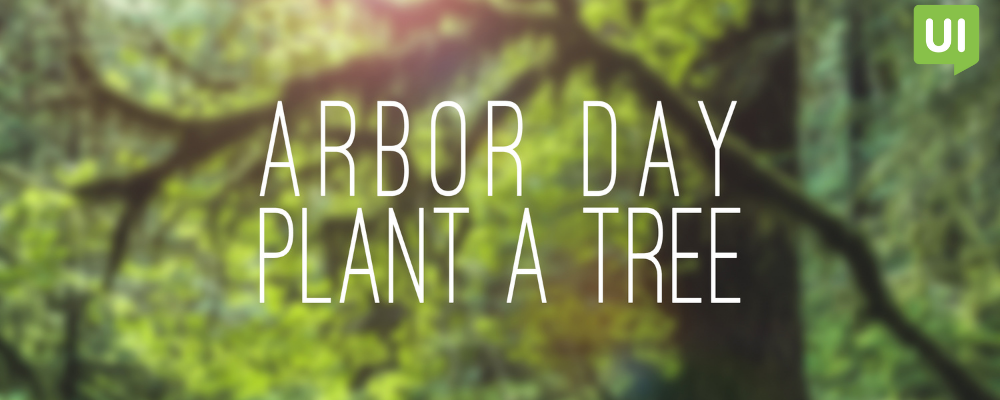We’ve talked a lot about UX design and the importance of implementing a solid design process for your website or mobile app. We know that good user experience motivates customers to buy in to your product or service. But can good UX design influence people to support a cause?
We partnered with Marilyn Salzman to conduct a usability test on our platform to see if users could be convinced to participate in planting trees in celebration of Arbor Day in the United States today.
Let’s share some reflections and highlights from those who participated!
What is Arbor Day?
So what even is Arbor Day? And how did it get started in the first place?
Arbor Day is a holiday celebrated on different days around the globe that focuses on planting trees to impact the environment in a positive way. The holiday originated in Nebraska and was founded by Julius Sterling Morton, and avid tree-lover. The first Arbor Day was celebrated on April 10, 1872.
The holiday grew beyond the state of Nebraska within just 20 years and has continued to be celebrated all over the globe throughout the year. In the US, it is customary to celebrate on the last Friday in April, which so happens to be today!
What is UX design?
Just as a refresher, UX design is the method of designing a website or mobile app with user experience at the forefront. As we all know, user experience is crucial to keeping customers engaged with your product. It also determines the way your customers feel about navigating your platform.
We preach it over and over again – you should always prioritize accessibility in UX design. Without ease of access, you have a website or app that is lacking. You won’t reach your intended audience, and you will waste so much money in your UX design process trying to fix what you didn’t prioritize to begin with.
UX design and Arbor Day
So what does UX design have to do with Arbor Day anyway?
We decided to take the holiday and treat it like an opportunity to test a little theory of ours – just like UX design has the power to influence the consumer to buy, it also has the power to influence people to engage in positive change.
The usability test parameters
In order to validate our assumptions, we set up a usability test on TryMyUI. These are the main tasks we set up for users:
- First, we gauged how many testers had either planted a tree before or planned to plant one.
- We, then, showed them a video campaign about how to plant a tree.
- After that, we showed them how many trees per capita existed in 2014 around the world.
- Then, we prompted them to pick between two different websites promoting planting trees: #TeamTrees and the Arbor Day Foundation.
- From there, they were asked to share their thoughts on the site they chose and let us know if their opinion/motivation for planting a tree had changed.
Findings
Throughout the test, we got some interesting observations and responses. As well, we saw a trend in how users felt about planting trees as they navigated through the test. Let’s break down some of the highlights.
Planting trees how-to & trees per capita exercises
During the initial exercises of watching the video about how to plant trees and finding how many trees per capita were in different countries, users appeared to have some realizations about planting trees. Kesare says,”Something maybe made me think it was harder…that actually did raise the possibility that I may try that.”
The data backs this up, as the majority of users gave an answer that they would be very likely to plant a tree after watching the video. The average answer was 5.6 after that video.
While completing the trees per capita exercise, many users were surprised at the numbers reported. All of the users are based in the United States, and many expected the US to have a higher number of trees per capita. Here are some of the highlights of different countries and their trees per capita:
- United States: 716
- Canada: 8,953
- Mexico: 459
- Ireland: 154
- Australia: 3,266
#TeamTrees vs. Arbor Day Foundation
After users completed the initial exercises, we directed them to their next task – choosing between two different sites that focus on planting trees. It’s important to note that users were directed to pick a site without having even a preview of it. Their decision was entirely based on the URL alone.
Site Names
Out of the 20 users, 14 of them selected #TeamTrees. The majority cited the URL being the main reason why. Mitchell says, “The reason why I would pick #TeamTrees is because of the name of the URL and it does intrigue me…” Others who picked the site said similar things.
For those who picked the Arbor Day Foundation, most cited a familiarity with the organization. So it’s worth noting that users tend to go for what they already know, if that is an option on the table.
UX design of sites
On their actual sites, users had a myriad of comments. #TeamTrees users liked the straightforward design of the site. The organization is affiliated with Mark Rober & Mr. Beast, and most recognized neither. The few who recognized anyone knew who Mr. Beast was.
Another key feature that #TeamTrees enjoyed was the fact that they could donate using crypto. One user did ponder about the types of trees being planted. Samantha says, “I wonder, though, what types of trees they’re planting in these areas and if they’re making sure to plant native trees and trees that belong in the ecosystems.”

Users who selected the Arbor Day Foundation found the layout of the site to be very clean and easy to navigate.
Impact of UX design
At this stage of the usability test, users were even more resolved to engage with planting trees. In fact, Jeal states, “I did plant a tree maybe like ten years ago with a new park in my city. Everybody went and planted a tree in honor of the park and that was really fun! I felt really good for that and this task has encouraged me to want to do that again.”
Therefore, it appears that positive UX design can influence positive change!
Additional reflections
At the conclusion of the test, users had pretty interesting observations about the significance of participating in this cause. The activity influenced many to change their minds about the importance of planting trees. Several users feel that more people need to understand the environmental benefits of planting trees. That’s definitely something both sites can improve upon!
Recommended article:
Conclusion
Based on this test, we can infer that UX design does have the power to influence people to make a difference, whatever that may look like. Does this mean that UX designers have a secret super power? Who can truly say! However, no matter what, the power of UX design should always be used for good!
Special shoutout to our Customer Success Manager, Aaron Esau, for coordinating and facilitating this test with Marilyn Salzman!





